- Home
- slideshows
- miscellaneous
- The coronavirus has caused a full breakdown in Iran, with an unknown death toll, infected leaders, and massive burial pits visible from space
The coronavirus has caused a full breakdown in Iran, with an unknown death toll, infected leaders, and massive burial pits visible from space
Iran's coronavirus outbreak first began in Qom, the holy city in which thousands of pilgrims arrive daily. The government's first acknowledgement of the virus was on February 19, when officials reported two deaths in Qom.

But by that time, the coronavirus had already struck the country days — or even weeks — earlier, revealing that the outbreak could already be spiraling out of control.
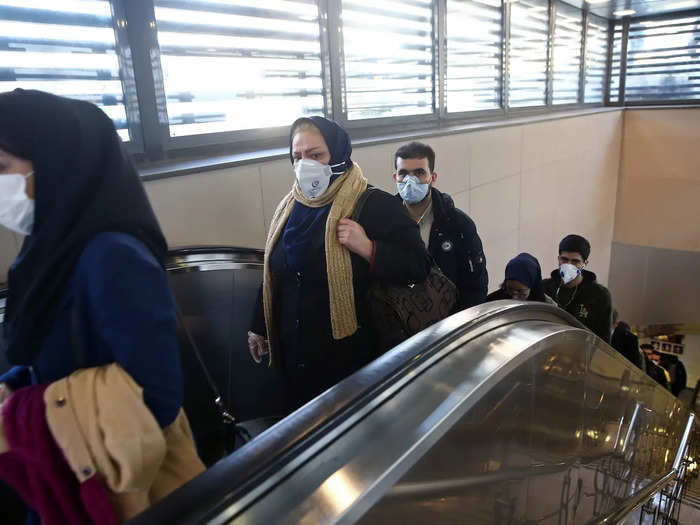
Source: RFERL
In one particularly jarring moment that revealed the severity of the outbreak, the deputy minister, Iraj Harirchi, aggressively wiped sweat from his forehead during a press conference in which he downplayed the severity of the outbreak. He tested positive for COVID-19 the next day.

Sources: Business Insider, The Guardian
Iran's health minister, Saeed Namaki, said officials believed the outbreak stemmed from a single merchant who frequently traveled between Qom and China.
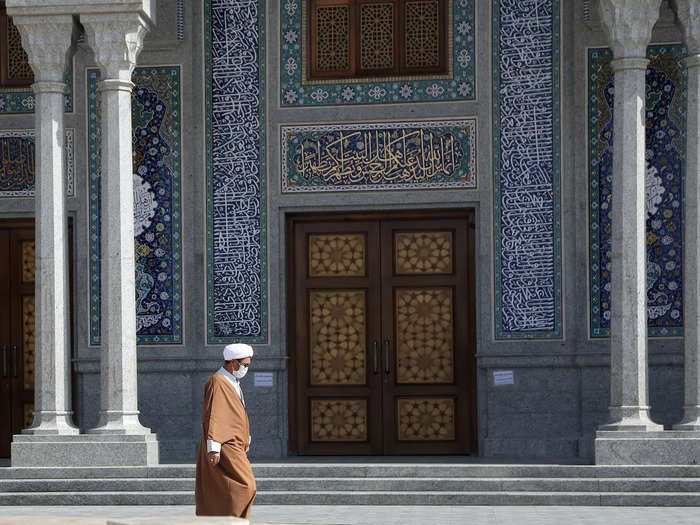
Source: South China Morning Post
By mid-March, Iran had already become one of the worst-affected countries. The only countries hit harder have been Italy, and China, where the virus originated.

Source: Reuters
The extent of the outbreak has been astonishing, with leaders, top officials, lawmakers, clerics, and members of the country's Revolutionary Guards all growing ill.

Source: Reuters
The patients so far include dozens of the country's 290 members of parliament, and it's believed that two members have died.
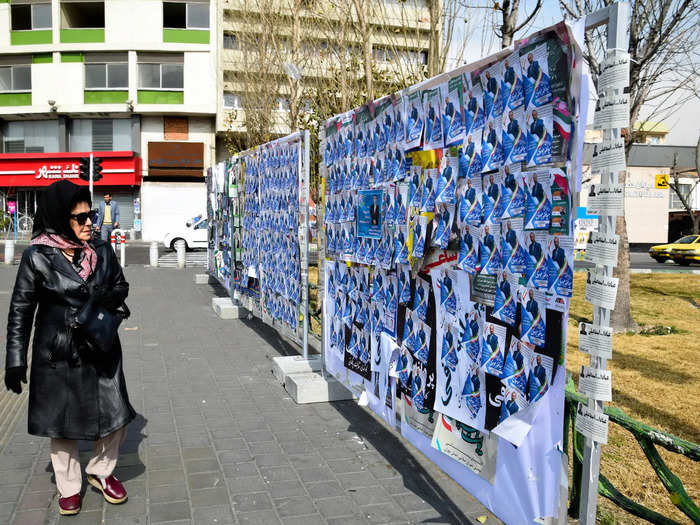
Sources: CNN, The New York Times
Also among the infected was a vice president, Eshaq Jahangiri. One adviser to Iran's Supreme Leader Ayatollah Ali Khamenei has died, and another one has tested positive and been quarantined.

Sources: CNN, The New York Times, Al Jazeera
On March 17, the state news agency IRNA reported that the 78-year-old Ayatollah Hashem Bathayi Golpayegani had died just two days after testing positive for the virus. The powerful cleric had been a member of the body charged with appointing the supreme leader.
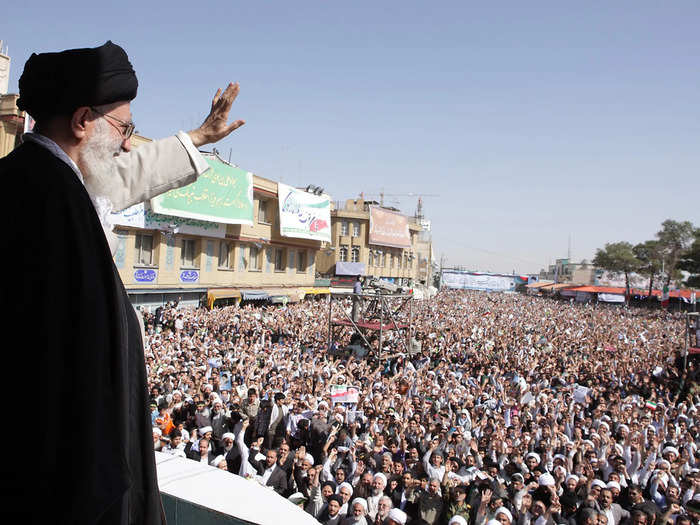
Source: Al Jazeera
Yet even as citizens and top officials were growing ill, the Iranian government predicted that the outbreak would not be a problem. Early reports indicated that security agents were placed in each hospital to forbid workers from leaking information about fatalities or equipment shortages.
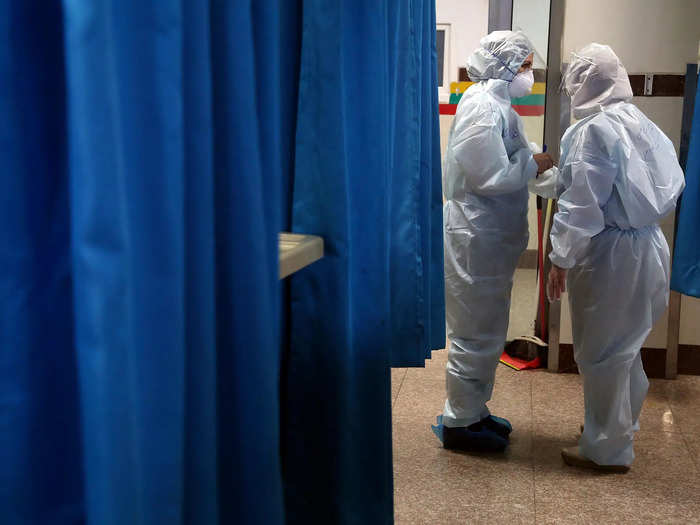
Source: The New York Times, ABC
But that response was not sustainable, and the country soon moved to shut down all schools and universities, as well as public spaces, including some shrines, mosques, and other religious sites.
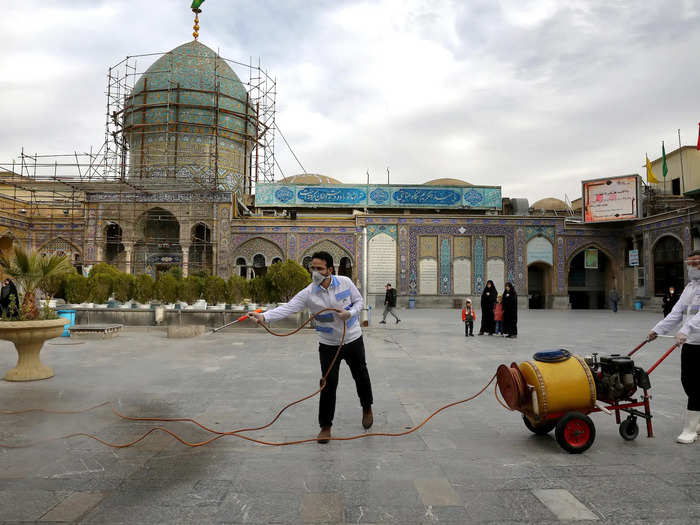
Sources: Business Insider, The Wall Street Journal
Since then, Iranian authorities have taken a number of additional steps to contain the spread, including freeing some 85,000 inmates to prevent outbreaks in prisons.
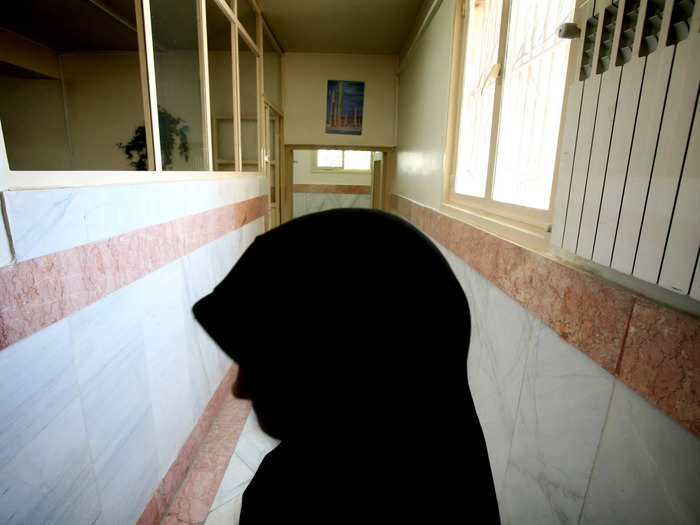
Source: Business Insider
Namaki, the health minister, also announced a plan to deploy 300,000 militiamen to go door-to-door and disinfect residents' homes — though many doctors pushed back, saying the militiamen might further transmit the virus.

Source: The New York Times
Officials have also threatened to execute people who stockpile protective items like face masks.
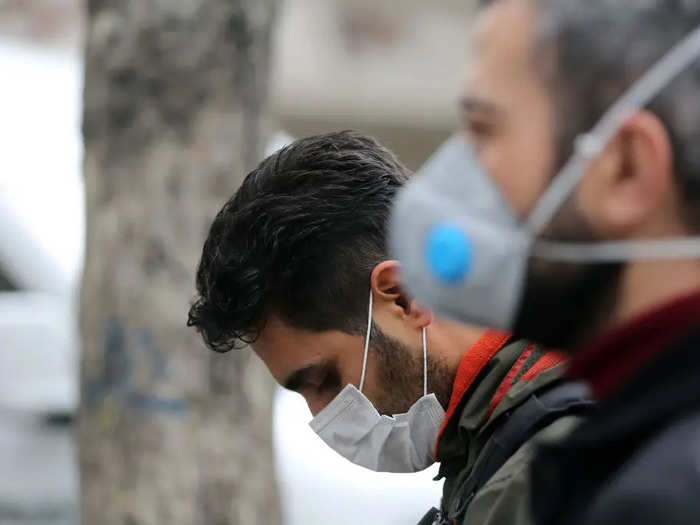
Source: The New York Times
It's still unclear how many coronavirus cases exist in Iran, but preliminary research conducted by six Canadian epidemiologists published late last month estimated that there could have been 18,300 cases by February 25. Given that the virus has spread so quickly in the weeks since then, the current figure is likely much higher.
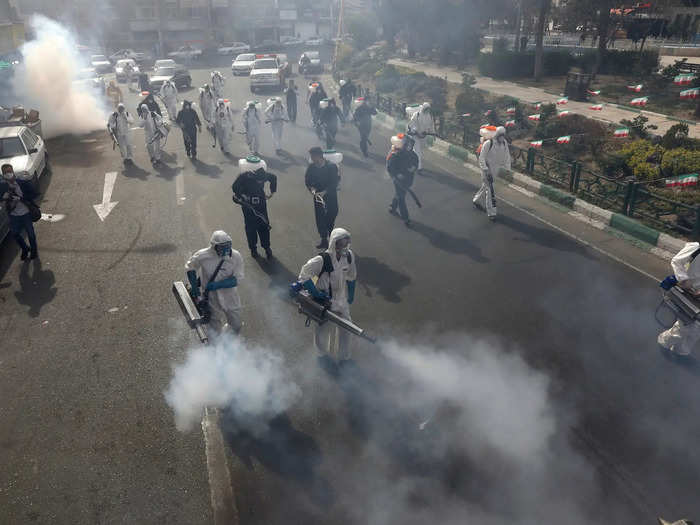
Source: medRxiv
As for the official number of cases, the Iranian government has pegged it at 16,169 by Tuesday. But that number is likely an underestimate, since Iran also has a shortage of COVID-19 tests.
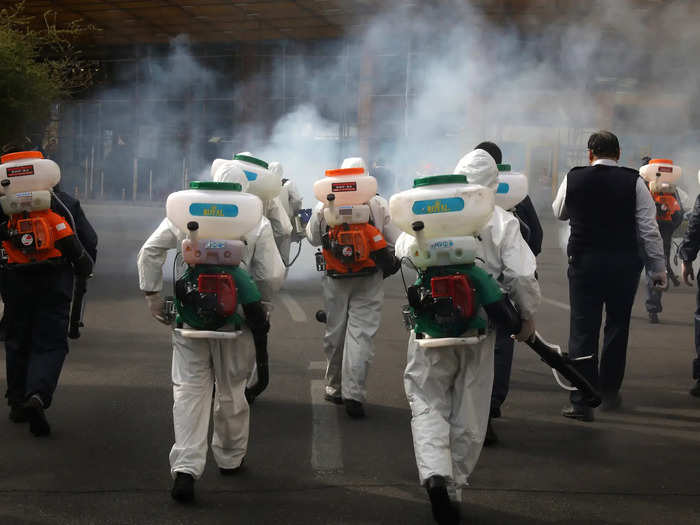
Some critics have also blamed American sanctions on Iran for preventing the country from receiving necessary medical supplies, humanitarian relief, and raw materials. Iranian health workers have also reported difficulties receiving masks, ventilators, and other protective gear to treat patients.

Source: Foreign Policy
But one of the most disturbing signs yet of the nation's struggle to combat the surging outbreak has been satellite images published March 12, showing massive 100-yard trenches apparently meant to bury coronavirus victims.
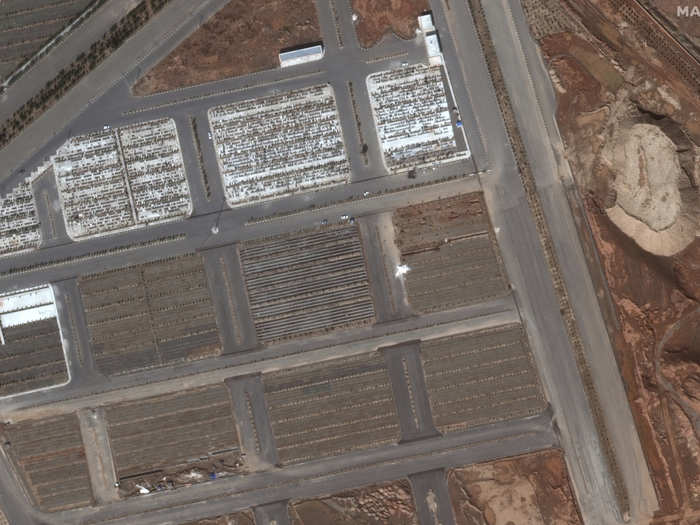
Sources: Business Insider, Washington Post
Experts said the size of the pits and the speed of their excavation revealed that the problem is a unique one — typical Iranian burial practices involve individual and family plots. Instead, these newly dug trenches reveal row after row of graves covered in lime to block the smell of decaying bodies.
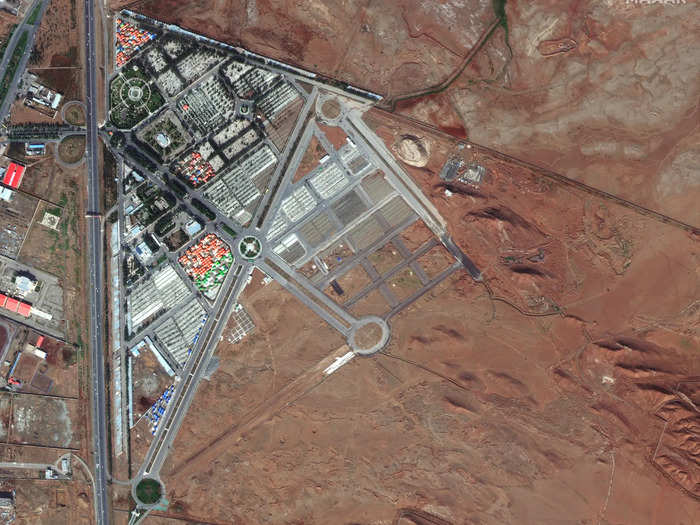
Sources: Business Insider, Washington Post
Videos from the site of the trenches revealed that workers had buried more than 250 coronavirus victims as of March 3. By that point, the Iranian government had reported just 77 deaths.
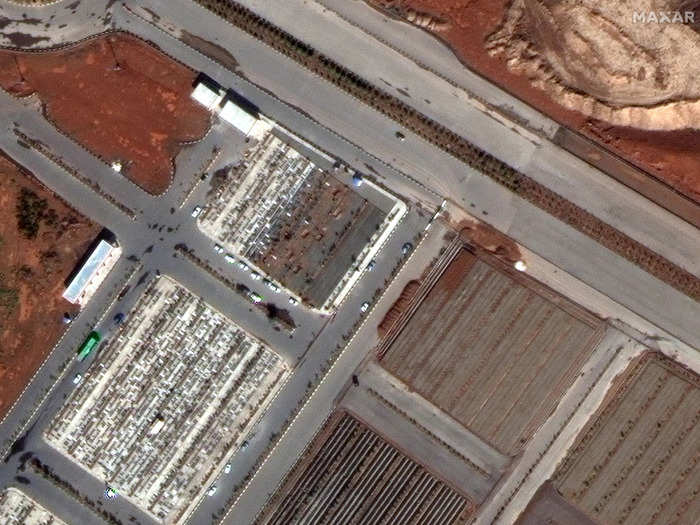
Source: Washington Post
On Tuesday, an Iranian state TV journalist cited research from Tehran's Sharif University of Technology that estimated the country could see 4 million cases of COVID-19 and and 3.5 million deaths if people don't comply with the government's travel warnings and guidance to socially isolate.
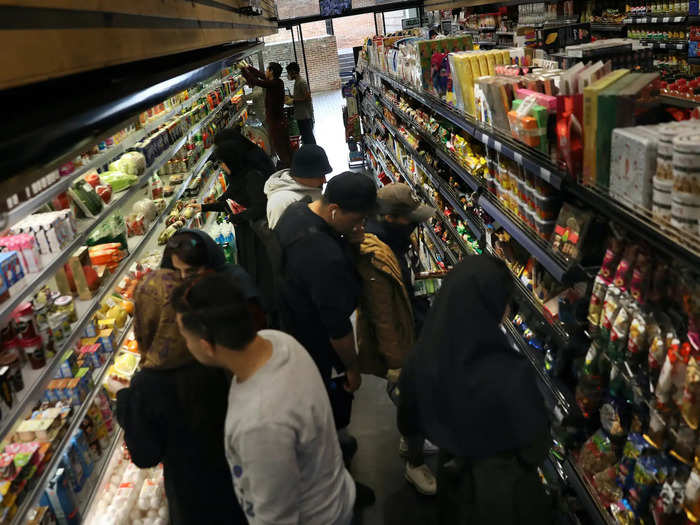
Source: AP
If they do comply, he said, the estimate was that 120,000 people could be infected and 12,000 could die. The Iranian state TV journalist didn't offer more information on the research, or say whether it was published or peer-reviewed.
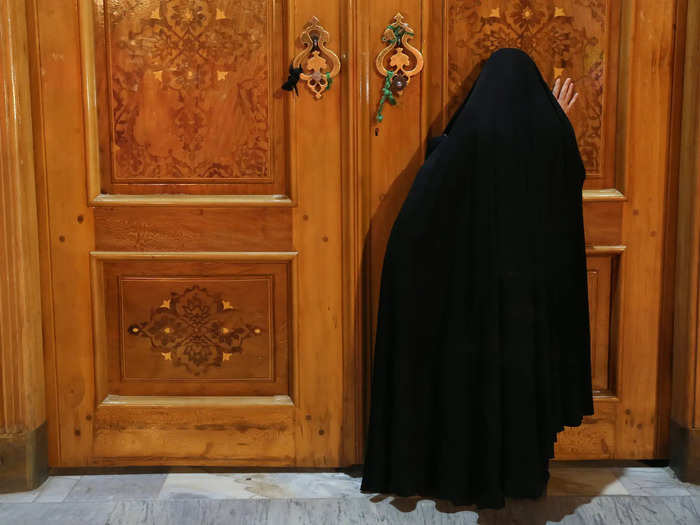
Popular Right Now
Popular Keywords
Advertisement